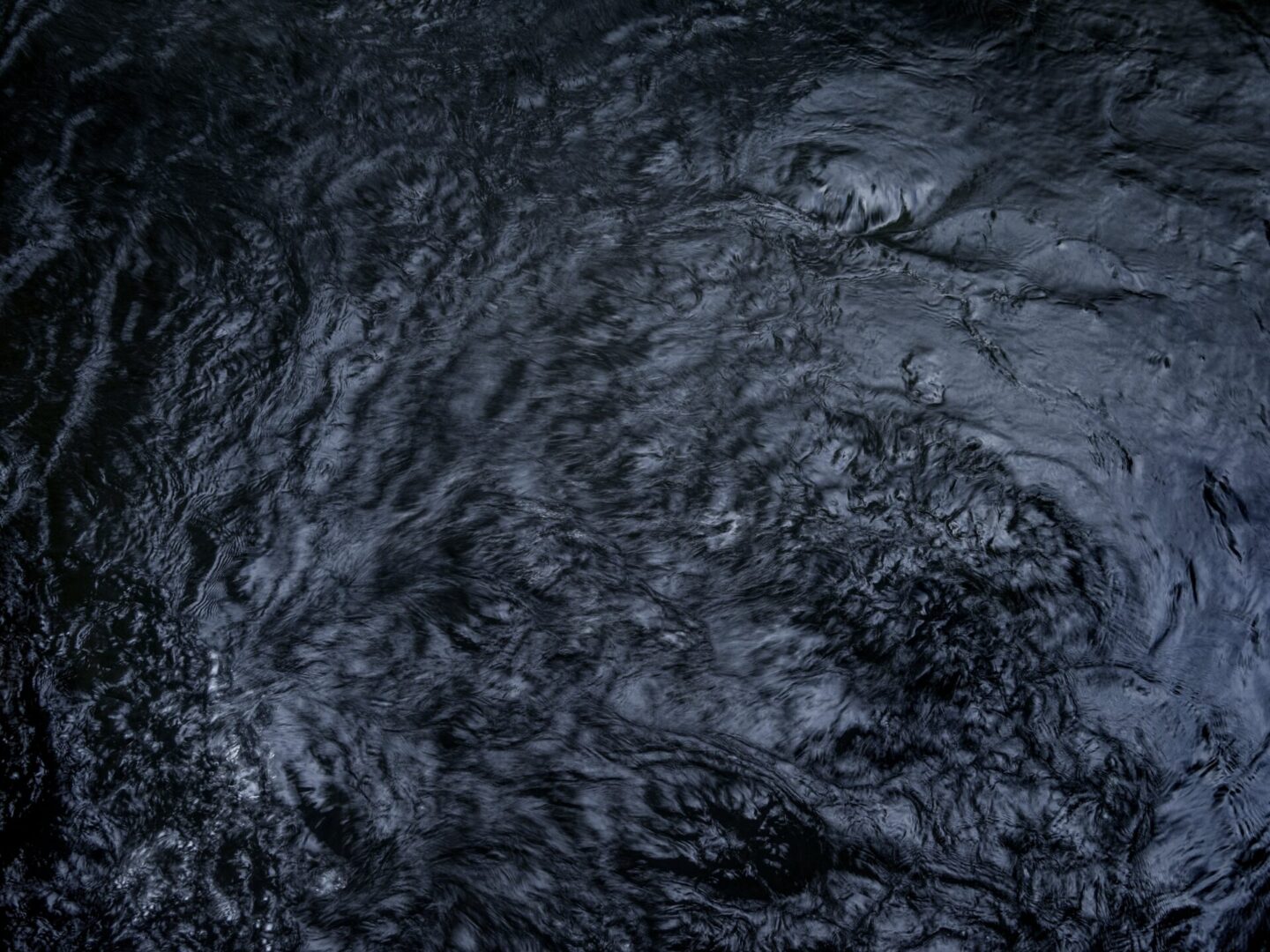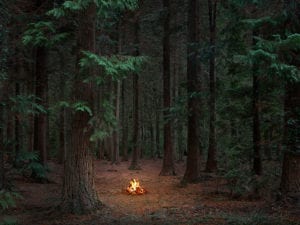Dorset-based artist Ellie Davies (b. 1976) creates works rooted in a sense of wonder at the natural world. She’s been photographing England’s wild places since 2007, capturing fragile ecosystems and urging us to reconnect with our surroundings amidst the worsening climate crisis and increased urbanisation. Her recent series, Weir Pool Triptych, was shortlisted for the 2025 Aesthetica Art Prize and is now on display at York Art Gallery until late January 2026. The images were shot on the River Test, an English chalk stream shaped by centuries of fishing and Victorian interventions. Manmade weirs, sluices and culverts govern its flow, funnelling and damning enormous volumes of water that roll, roar and tumble downstream. We spoke to Davies about the series, how her practice has evolved over the past two decades and what’s next.
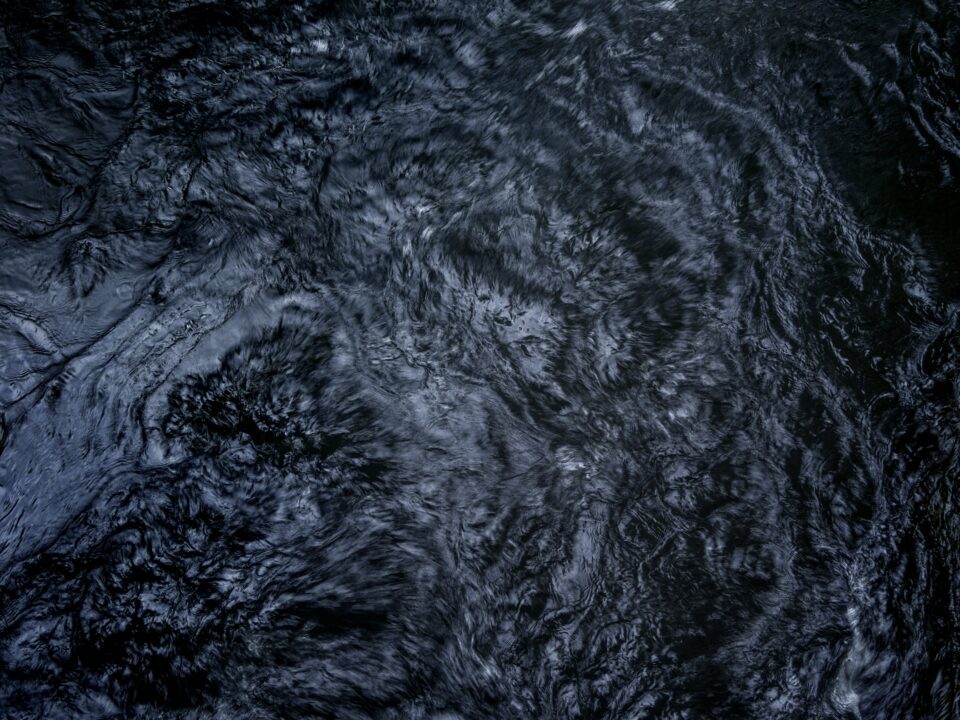
A: Take us back to the start. How did you start working behind the lens?
ED: Growing up I wanted to be a sculptor, working in clay and metal. After school I did an art foundation but then couldn’t see a way to make a career in sculpture, so I moved to London to work for various magazines. During this time I met my now husband. He was working as a commercial photographer with a studio in Clerkenwell and suddenly I could see a way to have a creative life and also make a living. However, I soon realised that taking commissions was not for me, I wanted to make my own work with full creative control so I went back to college and studied for an MA at London College of Communication. Alongside this I spent several years working as an assistant for photographers in all sorts of fields before embarking on my own career as an artist.
A: What drew you to the River Test as the site for Weir Pool Triptych?
ED: It’s a place I visited many times as a child. I was always mesmerised by the huge volumes of water roaring over the weir and down into the pool below. I remember walking over wobbly wooden bridges and feeling like I might tumble into the water below. The weir is controlled by massive wheels that must be opened or closed by the keeper, depending on the amount of rainfall and the volume of water coming downstream. It requires great knowledge of the river and I always found it fascinating, the completely idyllic, lazy flow above and the frantic tumult below. I had returned to make my Chalk Streams series in 2023 and it reignited my feelings about this river, drawing me back to make work exploring those themes.
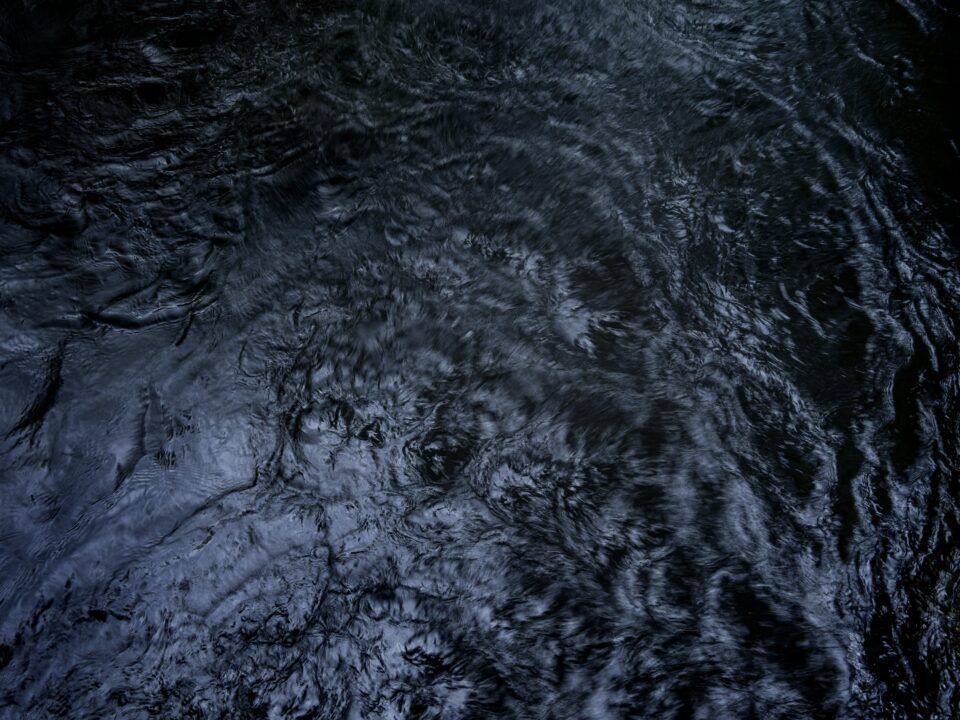
A: How can photography alter the way with engage with or value the landscape?
ED: I believe that time spent in the outdoors fosters a love for our wild places, and in turn drives a desire to conserve them. I aim to make work that resonates with people’s own experiences of being in the landscape, to make them feel the atmosphere or mood of a place and to treasure it. I hope it raises awareness about the plight of specific threatened ecosystems such as our Chalk Streams, forests, coastlines and waterways more generally.
A: How has your understanding of place evolved since you began in 2007?
ED: My earlier work explored how we form our relationships with the landscapes we grow up in and how it shapes us. Later work has been more concerned with the impacts of climate change on particular UK landscapes and hopes to highlight these concerns with an aim of driving a desire to protect them.
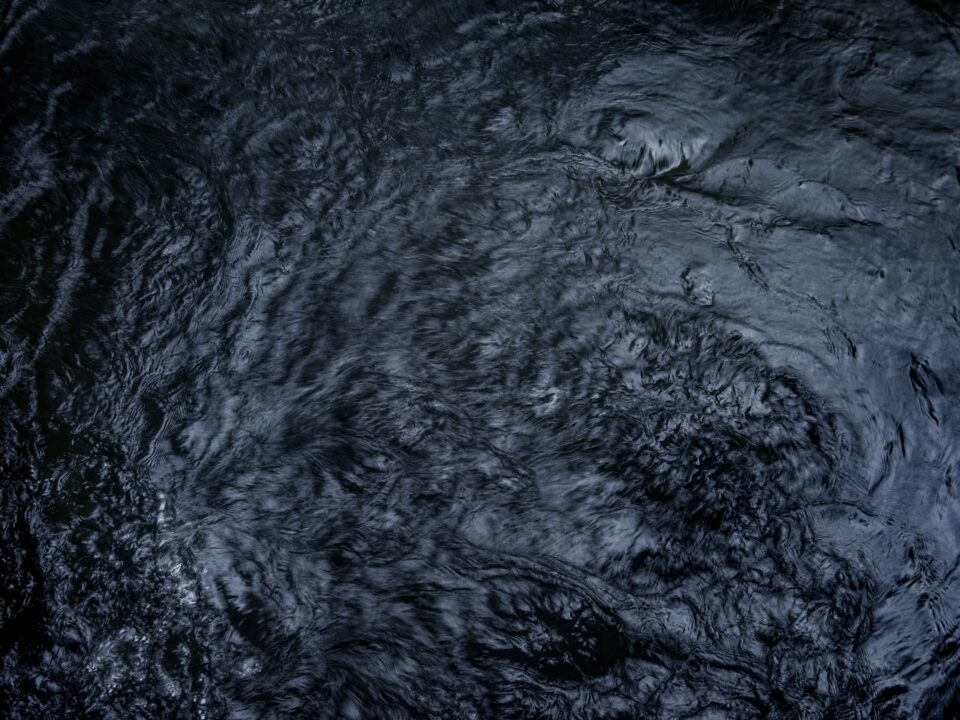
A: What’s next after Weir Pool Triptych? Are there new environments or ideas you’re drawn to explore?
ED: I’ve just released my newest series, Ebb and Flow (2025). This series considers the way that environmental pollutants move from one ecosystem to another. The South West Coast Path and the South Dorset Ridgeway are ancient trails that stretch from Dorset to Cornwall. For millennia these natural elevated byways have been critically important to local people. Standing in these ancient locations the past feels tangibly close, but even in these protected landscapes human impact can be seen everywhere; farm runoff and sewage outflows, plastic on the beaches and nets on the shore, these pollutants move from land into rivers and from rivers to the sea. Man-made environmental pollutants move through different landscapes, a sometimes visible and often invisible cross-contamination from one ecosystem to another. The images are made by throwing, pouring and scattering organic liquids into water, the motion drawing out tendrils and creating swirling shapes. They foreshadow the ecological concerns of climate change against an ancient natural world teetering on the edge. I am hoping to make a new series this winter, flipping the palette of the Ebb and Flow series, working in darker, more muted tones with cloudforms made by gathering material such as soil and chalk from the places the images are made.
The Aesthetica Art Prize Exhibition 2025 is at York Art Gallery until 25 January.
elliedavies.co.uk | yorkartgallery.org.uk
Find out more about the Aesthetica Art Prize 2025 Shortlist here.
Words: Emma Jacob & Ellie Davies
Image Credits:
All images courtesy of Ellie Davies.


